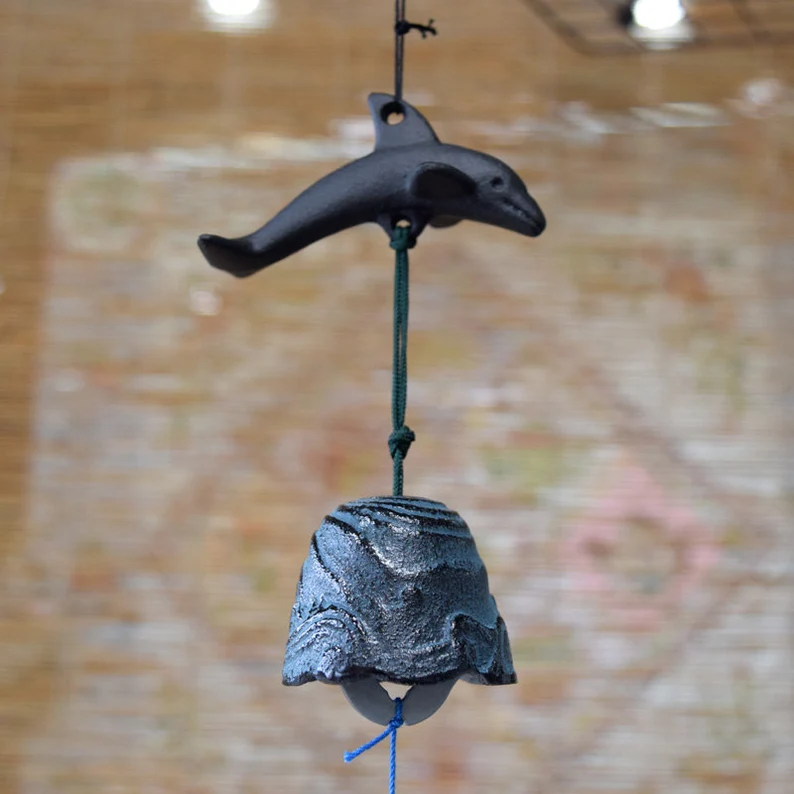Characteristics and History of Southern Furin wind chimes
The biggest feature of Southern Furin wind chimes is "sound". Long, clear sound that cannot be produced by other Furin wind chimes. The secret to the sound of Nanbu Furin wind chimes is that they are made from high-density castings and Nanbu ironware, using high-quality iron sand and rock iron (iron ore) as raw materials.

History and background of Nanbu Tekki (Furin wind chimes)
What is the history behind the creation of Southern Furin wind chimes with a high healing effect?
It started when casting craftsmen were invited from Omi at the end of the Heian period. In Iwate Prefecture, Mizusawa in Oshu City and Morioka City are famous for producing Nanbu ironware. Ironware from Mizusawa, Oshu City has the longest history of ironware, and its roots can be traced back to the end of the Heian period, more than 900 years ago. Fujiwara no Kiyohira, who won the ``Gosannen no Eki'' and later built Chusonji Temple in Hiraizumi, Iwate Prefecture, invites casting craftsmen from Omi Province (now Shiga Prefecture). , It is said that it started with making Buddhist altar fittings. On the other hand, in Morioka, tea kettles were made by tea pot makers invited from Kyoto during the Edo period.
Nanbu wind chimes were made in the Showa period. It wasn't until the Showa period that castings made in Mizusawa and Morioka came to be called 'Nanbu Tekki'. In 1959, the foundry associations of Mizusawa and Morioka jointly established the ``Federation of Iwate Prefecture Nanbu Tekki Cooperative Associations,'' which led to a unified name of ``Nanbu Tekki''. Then, when Nambu Tekki began to adopt the “Namagata” manufacturing method in earnest, Nambu Furin wind chimes, vases, and pots began to be made.
Traditional crafts that Iwate boasts to the world
Nanbu Furin wind chimes made with Nambu ironware. Its cool tone stimulates the five senses and cools you down in the hot and humid Japanese summer. It's a really scenic landscape. Nambu Furin wind chimes, carefully crafted by Nambu Tekki craftsmen, are said to be durable and can be passed down to children and grandchildren if used with care.
The beautiful timbre of Nanbu Furin wind chimes has been selected as one of the 100 Best Japanese Soundscapes to Preserve by the Japanese Ministry of the Environment.
Author Profile
Latest entries
 Kotatsu Futon comforter2024年7月1日New Arrival Kotatsu Futon Comforter
Kotatsu Futon comforter2024年7月1日New Arrival Kotatsu Futon Comforter Noren Tapestry2024年6月13日Noren Tapestry Features Masterpieces by Japanese Genius Ito Jakuchu
Noren Tapestry2024年6月13日Noren Tapestry Features Masterpieces by Japanese Genius Ito Jakuchu Tatami mat2024年6月6日New Arrival Tatami Igusa yoga mat Tatami mat
Tatami mat2024年6月6日New Arrival Tatami Igusa yoga mat Tatami mat Noren Tapestry2024年5月31日Incorporating the works of Maruyama Okyo into Noren tapestries
Noren Tapestry2024年5月31日Incorporating the works of Maruyama Okyo into Noren tapestries


